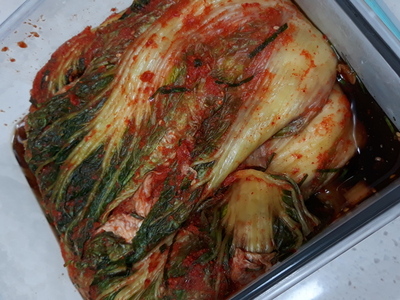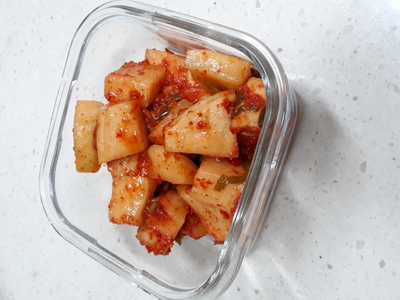Koreans and foreigners
in Korea eat seasonal foods in winter. They eat it because of three big
reasons: first, for health, second, for safety, third, for taste. For the first
reason, seasonal foods become nutritious and delicious during their own season.
For example, shepherd's purse, a spring seasonal food, is usually eaten in
spring, because it becomes rough and loses its scent in other seasons. But in
spring, it is soft and loved by many people. Second, eating seafood such as
oysters or manila clams could be dangerous because of the risk of food
poisoning. So, some seasonal foods are not eaten in other seasons.
So, what are the
seasonal foods for winter in Korea?
The first is mackerel.
Mackerel is a blue-colored fish. It gets fatty in autumn and has much omega-3
fatty acid and has docosahexaenoic acid. So, mackerel is good for the brain, blood,
and heart diseases.
The second is the tangerine.
Tangerines have vitamin C, so tangerines are good for colds and the mucous
membrane.
The third is the oyster. Oysters
are called by many nicknames, but the nickname related to oyster’s nutrition is
“the milk of the sea.” Because they have much iron, calcium, zinc, copper,
manganese, and vitamins A, B, and C, oysters are good for anemia and growth.
The fourth is
strawberry. Strawberries are full of vitamin C and anthocyanin. Vitamin C in
strawberries is good for colds and cancer. Also, it makes the skin look healthy. Anthocyanin
is good for cancer and tired
eyes.
The fifth is the cockle.
Cockles have taurine, nucleic acid, protein, amino acid, and vitamins. Taurine
in cockles tightens up the immune system. Protein, amino acid, and vitamins are
good for growth. Taurine is good for your liver’s health.
The sixth is napa
cabbage. Napa cabbage is familiar to many Koreans because it is used for
kimchi. It has much fiber, so it has effects on intestinal regulation.
The seventh is a white radish.
White radish is also used for many types of kimchi. It contains its own starch-degrading
enzyme and fiber. Starch-degrading fiber helps digestion, and fiber is
effective in body waste cleaning.
The eight is old
pumpkin. Old pumpkin contains many types of nutrients. They are carotene,
vitamin C, lecithin, and Kalium.
It is good for a diuretic effect and deintoxication.
The ninth is shrimp.
Shrimp contains keto acid. This acid prevents deposits of fat and promotes
emission of bad materials.
These seasonal foods can
be eaten in many ways. If we know how to eat them, we can enjoy them better.
For mackerel, you can
glaze it with spicy sauce and white radish, or you can just grill it.
For tangerine, you can
eat it raw, or add it to confectionery.
For the oyster, you can eat
it raw, salted or fried. Also, you can put it into various types of soup, like sea
mustard soup.
Strawberries can be
used for many kinds of dishes. You can eat them raw. Also, they are used for
many kinds of baking, such as cakes, tarts, and roll cakes.
Cockle can be steamed
or seasoned with spicy soybean sauce.
 ▲ example: kimchi
▲ example: kimchiNapa cabbage can be
used as an ingredient for kimchi, salad, soup, and ssam.
 ▲ example: kkakdugi
▲ example: kkakdugiOld pumpkin can be used
as squashed pumpkin, pumpkin soup, Korean hard taffy, and pumpkin rice cake.
For shrimp, you can
simply steam or fry it, and make it into jeon.
Seasonal food can help
you stay healthy and active during the winter. How about enjoying seasonal
foods this winter?
다른 곳에 퍼가실 때는 아래 고유 링크 주소를 출처로 사용해주세요.


용현여자중학교,1학년